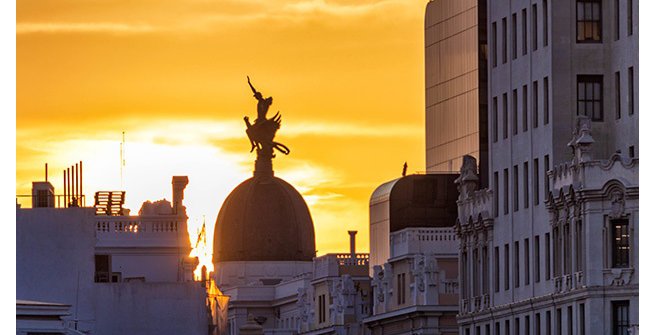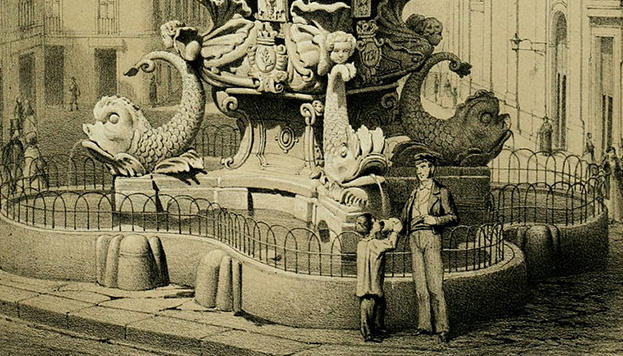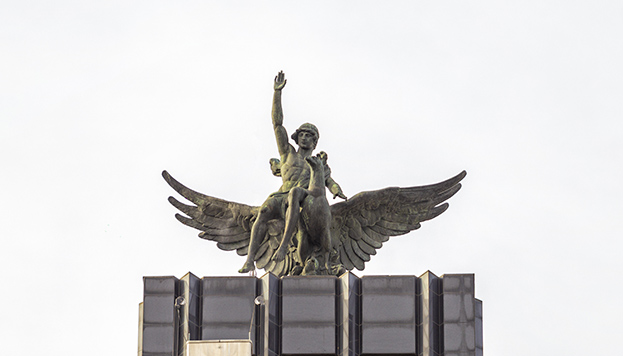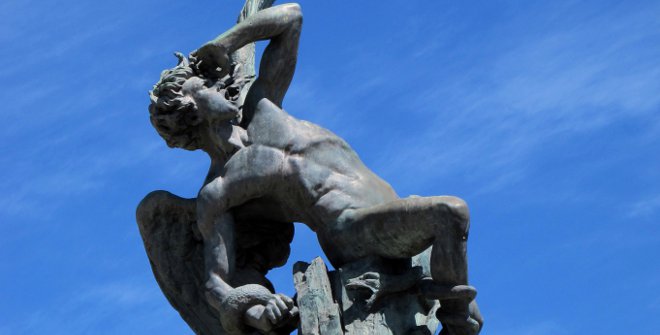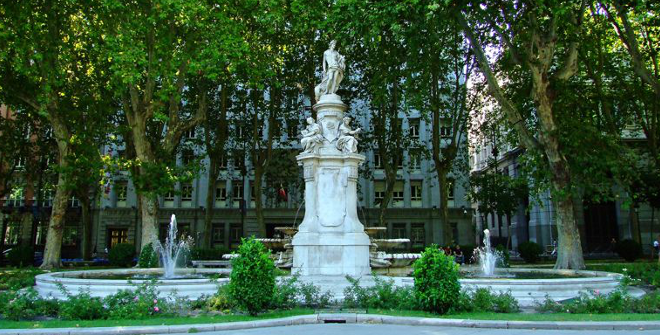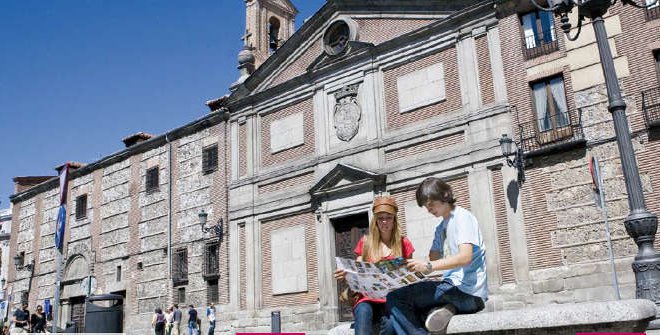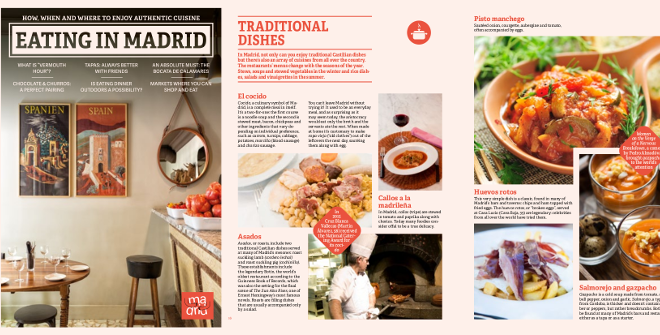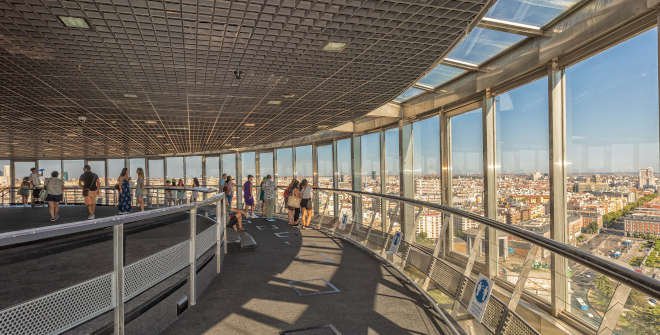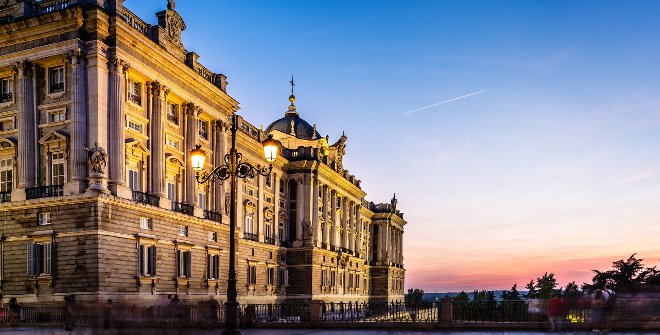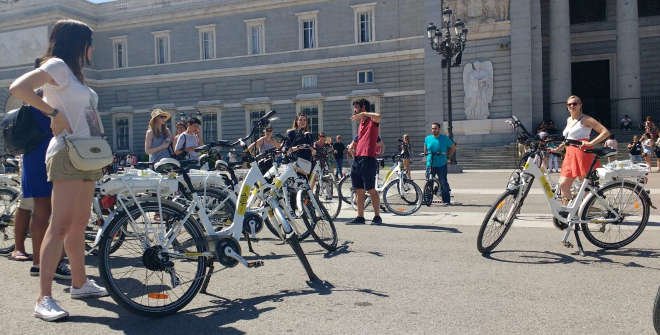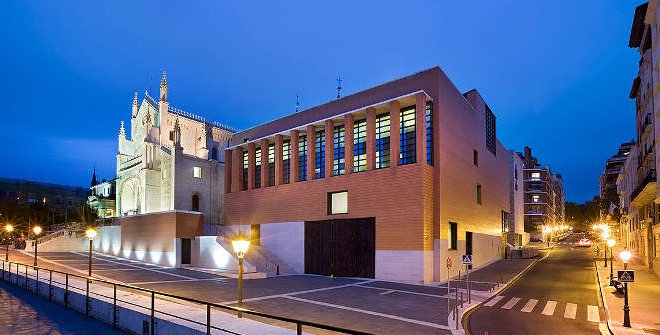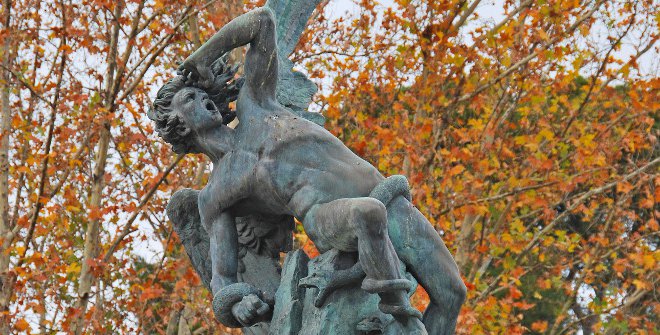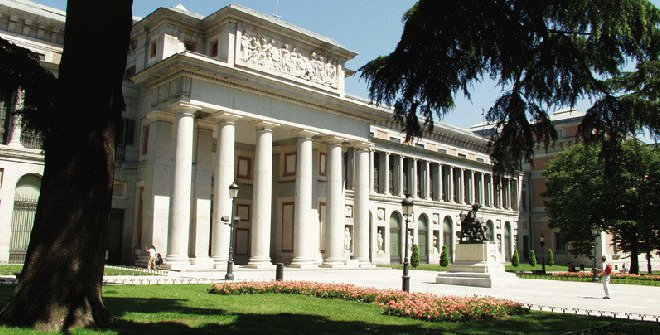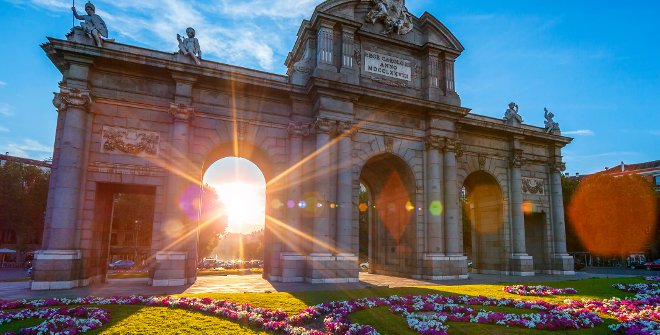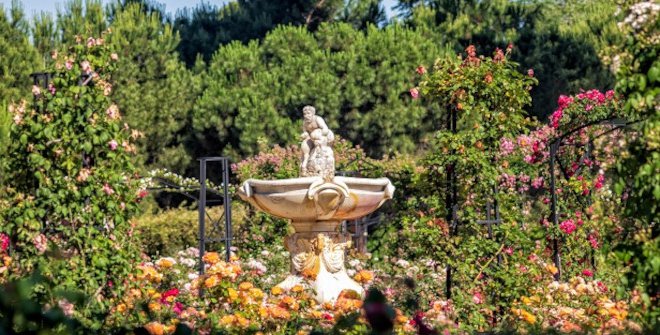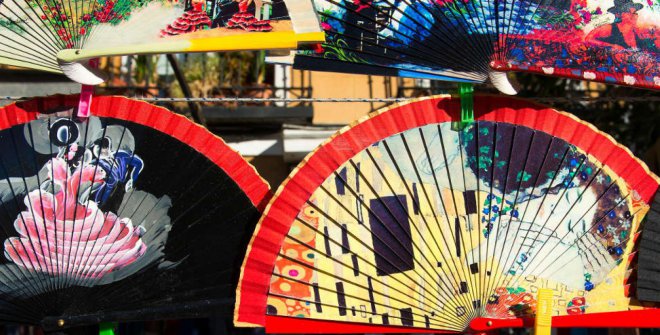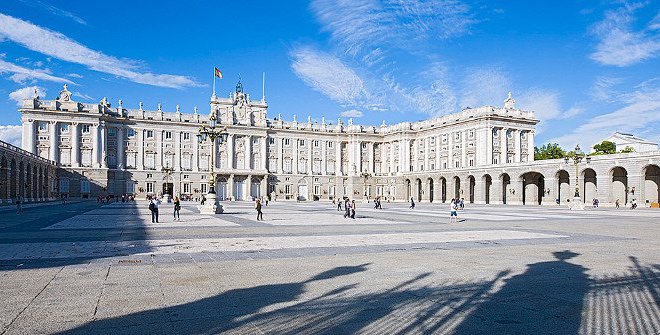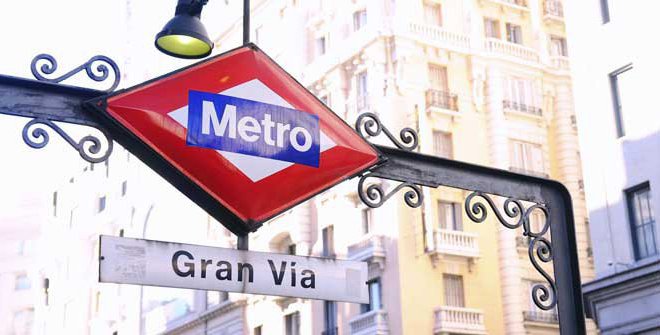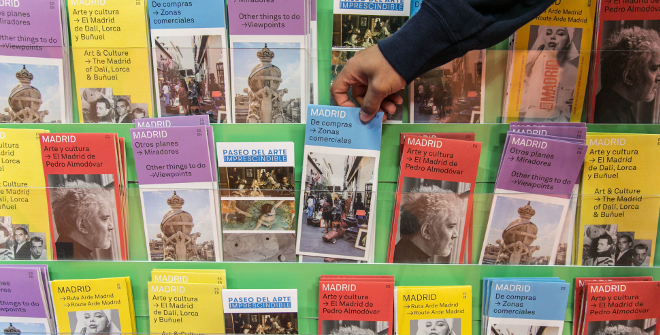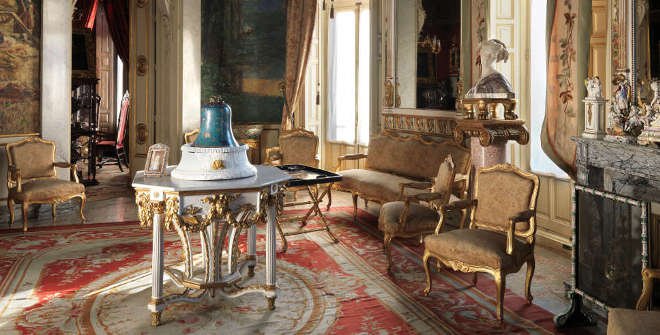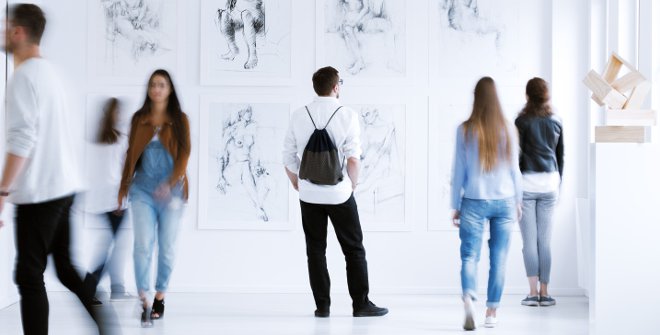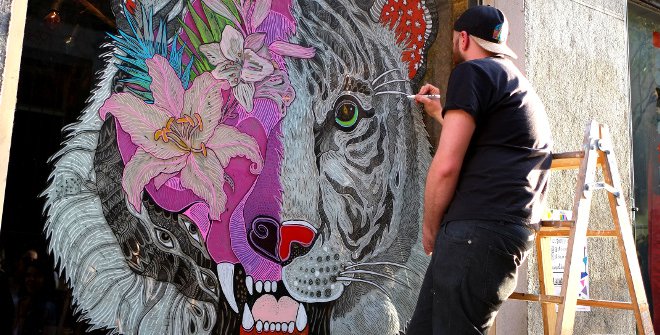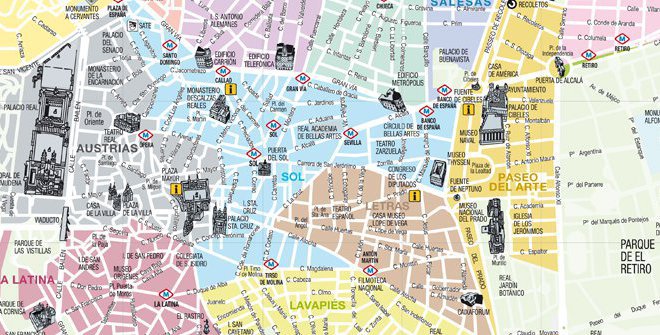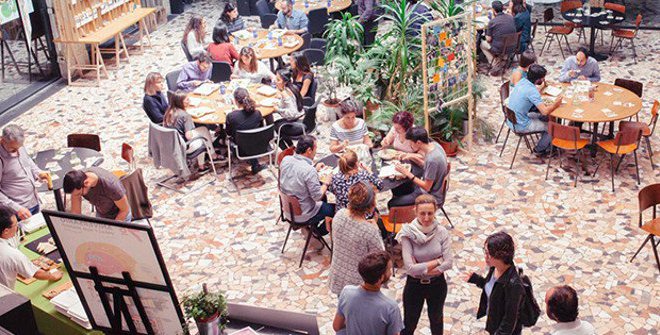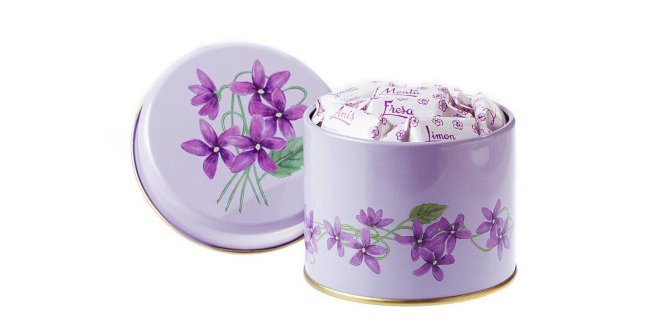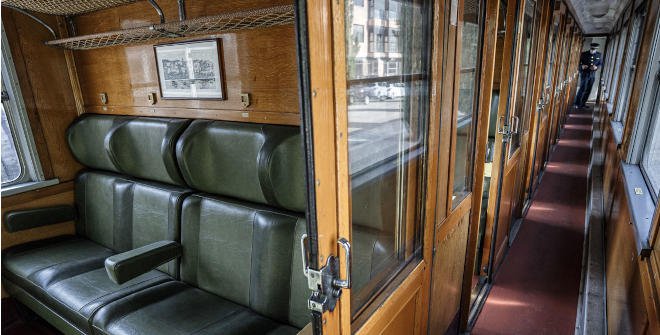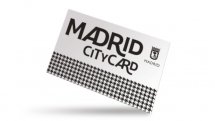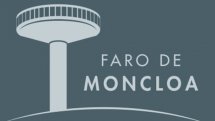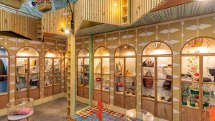Mythological Madrid
From Greece, Rome and even Ancient Egypt, numerous gods and goddesses protect Madrid's streets, perched atop its fountains and on the rooftops of its tallest buildings. Although it doesn’t include all of them, this divine selection will fire your imagination, transporting you to other times and worlds, for Madrid is a veritable Olympus. By Silvia Roba
CYBELE, Phrygian goddess of the Earth
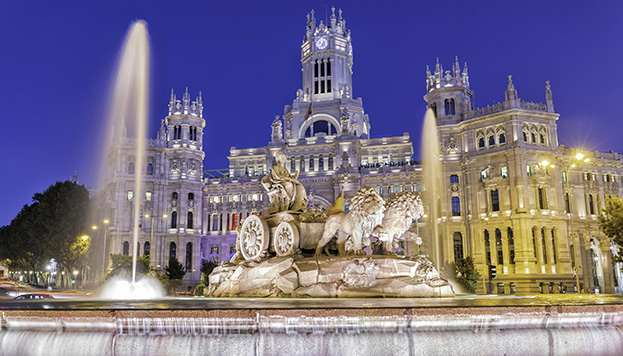
Cybele is the goddess of Mother Earth, of caves and mountains, of ramparts and fortresses and of nature and animals. She was a Phrygian goddess who was later adopted by the Greeks and Romans, although long before Madrid made her one of its muses. This was done on the orders of King Charles III, who devised a plan to beautify the city by remodelling the Paseo del Prado and imbuing it with a Neoclassical aesthetic. The king wanted to unite the promenade’s three sections –the meadows of Recoletos, San Jerónimo and Atocha– by channelling the brook that ran through them, planting trees and building fountains. Quite a few of them were designed by Ventura Rodríguez, Madrid’s Chief Master Architect of Building Works and Canals at the time. Cibeles Fountain is the first.
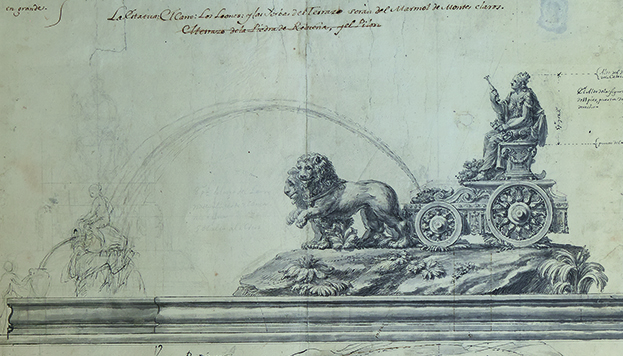
It was constructed between 1777 and 1782 by Francisco Gutiérrez (goddess and carriage), Roberto Michel (lions) and decorator Miguel Ximénez. Originally, not only was the fountain ornamental but its spouts also supplied water to the public and to water sellers. Two of these spouts, a bear and a griffin (a sort of dragon), are part of the collection at San Isidro Museum.
NEPTUNE, god of the sea

Initially, Cibeles Fountain wasn’t located in the centre of Plaza de Cibeles, the square that shares its name, but next to Buenavista Palace at the entrance on Paseo de Recoletos. It faced another wonderful construction designed by Ventura Rodríguez: Neptuno Fountain. This fountain depicts the Roman god of the sea riding a seashell drawn by hippocampi (horses with fishtails), with a snake wrapped around his right hand and a trident in his left. Seals and dolphins swim around the carriage, spraying up tall jets of water. The figure of Neptune, which is the fountain’s centrepiece, was built between 1777 and 1786 and was designed by Juan Pascual de Mena.
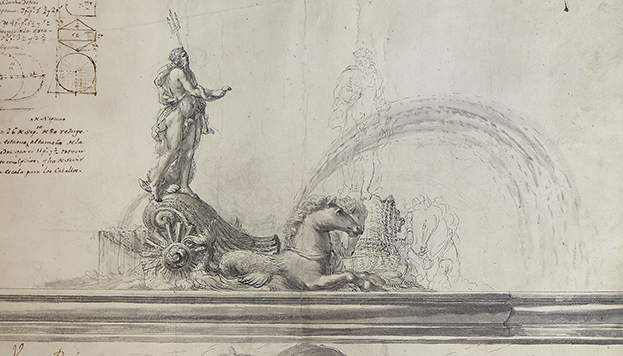
APOLLO and light

This is the least known of the three fountains that decorate Paseo del Prado. Designed by Ventura Rodríguez, it was built by Alfonso Giraldo Bergaz (Apollo) and Manuel Álvarez, aka “The Greek” (other figures). Apollo Fountain, unveiled in 1803 during the reign of Charles IV, is also known as the Fountain of the Four Seasons, which are represented as allegorical sculptures: spring carries a basket of flowers, summer a bundle of grain, autumn a bunch of grapes and winter wears a crown of twigs. You can also see two masks that represent Circe and Medusa, who, according to Greek mythology, were a sorceress and a female monster that could turn anyone who looked her in the eyes to stone.

TRITON, half man, half fish
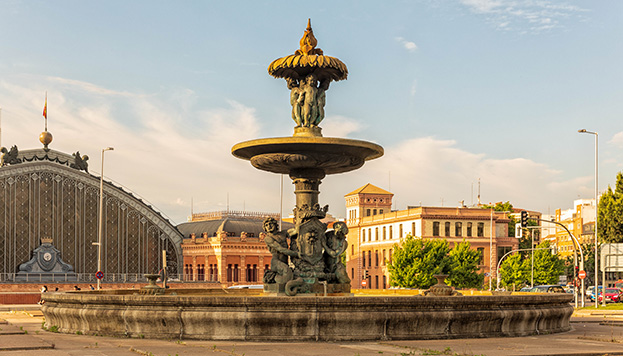
Rounding out the set of fountains along Paseo del Prado was one that has come to be known as the Artichoke Fountain. Today it is located in El Retiro Park, although there’s a bronze replica in the Atocha roundabout. Designed by Ventura Rodríguez, the motifs employed make it very Baroque in style (plant decorations and water effects engraved into the stone). Despite is nickname, the fountain actually pays tribute to Triton, a Greek demigod of the sea. He was the son of Poseidon, god of the sea and of earthquakes, or Neptune, as he was known to the Romans, who, as we’ll see next, also features prominently somewhere else along Paseo del Prado.
THE MUSES and art
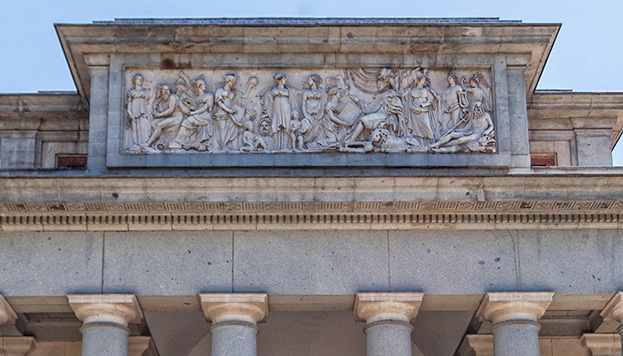
The frieze on the west façade of the Prado Museum shows King Ferdinand VII receiving tributes from Minerva, the Roman goddess of wisdom, and the Fine Arts. It also shows Apollo, in his capacity as the god of poetry, and Neptune and Mercury, who symbolise the role of the educator and the traits of reason and eloquence. Around them are the muses: on her knees to the left is Architecture, and on foot behind her are Painting and Sculpture. On the very left is Clio, or History, who is writing on the allegory of time, along with Urania, included as a tribute to the sciences. The piece was designed and begun by Ramón Barba (1767-1831), but it was completed by other sculptors. One of them was Ponciano Ponzano, who designed the lions outside Spain’s lower house of parliament (Congreso de los Diputados).
The palest VENUS
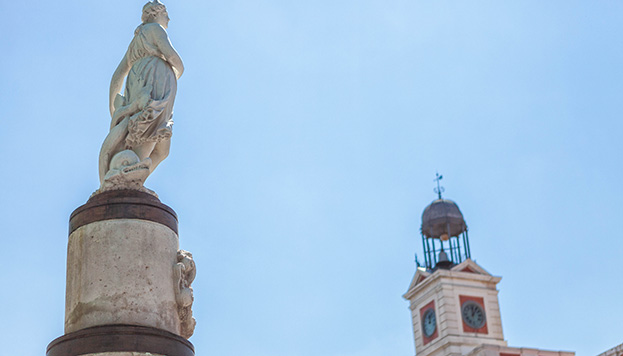
It might be Diana, the Roman goddess of the hunt, or more likely Venus, the goddess of love and beauty, but in Madrid she’s known as La Mariblanca, a nickname bestowed on her by the water sellers of the past, who admired her snow-white marble skin. This statue in Puerta del Sol has travelled all over the city. The one we see now is actually a replica of the original, which Florentine merchant Ludovico Turchi brought to the city in 1625 as the finishing touch for the Fountain of Faith, in the same square where the statue is currently located.
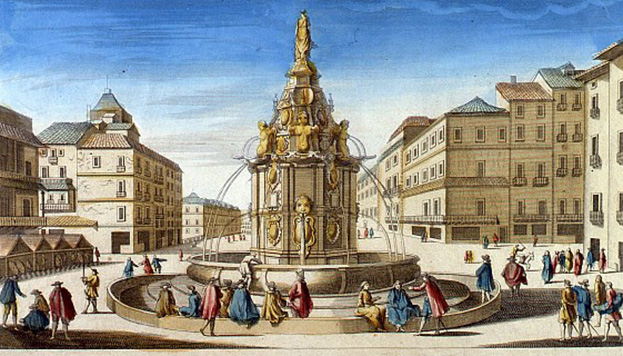
This fountain, designed by Italian sculptor Rutilio Gaci, was replaced with another by Pedro de Ribera in the 18th century which was eventually demolished. Our goddess was not, however. She went on to grace the fountain in Plaza de las Descalzas. After the fountain was dismantled, the statue was relocated in El Retiro Park and Paseo de Recoletos, where it remained until 1984, when it was destroyed in an act of vandalism. After it was rebuilt, it was moved to its current location, Casa de la Villa. The one we see here is a replica that was originally located at the junction of Calle de Alcalá and Carrera de San Jerónimo. From 2009 on it has stood at the beginning of Calle Arenal.
FAMA, the personification of rumour
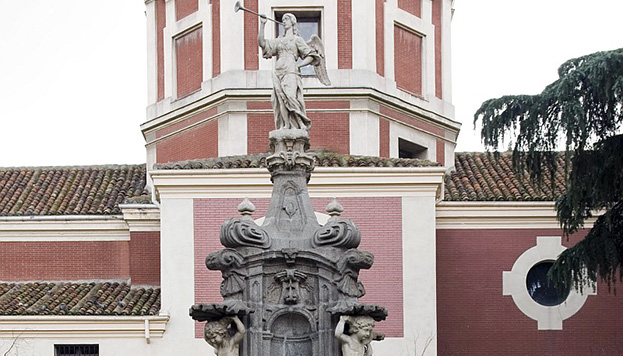
Although it was originally located in Plaza de Antón Martín and spent some time in Oeste Park, today we can see Fama Fountain, built by Pedro de Ribera in 1732, in the gardens in front of the History Museum, between Calle Fuencarral and Calle Barceló. Commissioned by Philip V, the fountain is crowned by a sculpture of the goddess Fama made by Juan Bautista. Due to general deterioration, the fountain was rebuilt in the early 20th century. It features a central structure that is very Churrigueresque in style, with four dolphin guardians that spray water into a basin shaped like a four-leaf clover.
MINERVA, wisdom and courage
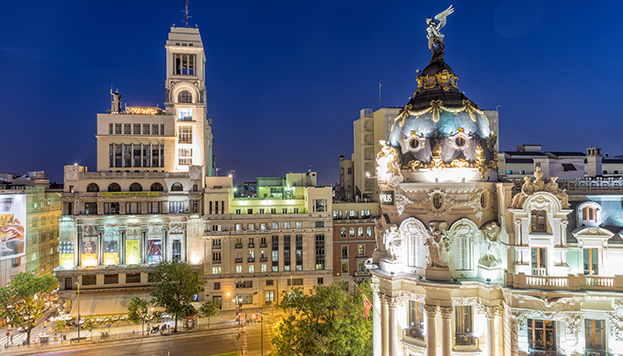
Founded in 1880, Círculo de Bellas Artes didn’t move to its current address in Calle de Alcalá until 1926. The building was designed by Antonio Palacios and has enormous architectural value. If you look up, you’ll see a powerful figure watching over us. It's Minerva, goddess of wisdom and protector of Rome. You can see her close-up with this webcam. Built by Cadiz-born sculptor Juan Luis Vassallo, she weighs 3,085 kilos and stands 7.6 metres tall. She bears a shield featuring Medusa’s head as well as a lance, as she's also the goddess of tactical warfare. She is accompanied by the lightning bolt of Jupiter (her father) and an owl.

NIKE, winged victory
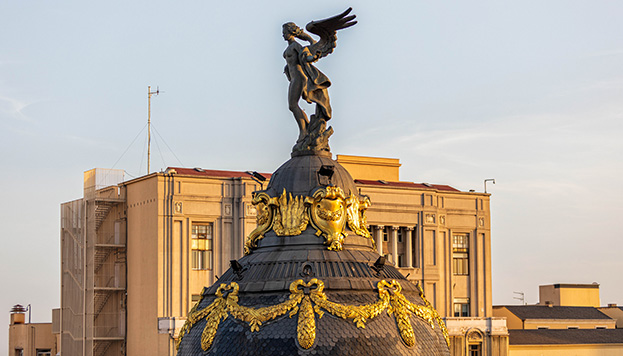
The rooftop of Círculo de Bellas Artes offers a panoramic view of the beginning of Gran Vía avenue, at the junction with Calle de Alcalá where the Metrópolis Building is located. Its most characteristic feature is its slate dome with golden embellishments. There was originally an allegorical bronze statue on top of the dome that paid tribute to the Phoenix. Above the bird, with his arm raised high, flew Ganymede, a handsome Trojan prince who was abducted by Zeus to serve as cup-bearer to the gods.
In the early 1970s, the former owners decided to move the statue to their building on Paseo de la Castellana (no. 33, the current headquarters of Mutua Madrileña). In its garden you can view the original, although you can also see replicas atop the buildings on Gran Vía that house the fashion retailer Primark (no. 32) and the insurance company AGF (no. 68). So, who is watching us from the top of the Metrópolis Building? It’s a Winged Victory sculpted by Federico Coullaut Valera, which has been there since 1977. It depicts the Greek goddess Nike (daughter of Zeus and companion to the goddess Athena), who can run and fly at great speeds.
DIANA, huntress in the heavens

Now, let's “visit” no. 31 on Gran Vía, where we find an Art Deco building: the Hotel Hyatt Centric Gran Vía Madrid. Its rooftop bar is called El Jardín de Diana, an allusion to the sculpture of Diana the Huntress, a Roman goddess and protector of nature, which is located on top of the hotel. It was created by Natividad Sánchez Fernández, the first woman to design a sculpture to embellish the sky along the century-old avenue. She stands five metres tall, weighs 900 kilos and is depicted arch in hand and accompanied by five dogs.
Guardian SPHINXES
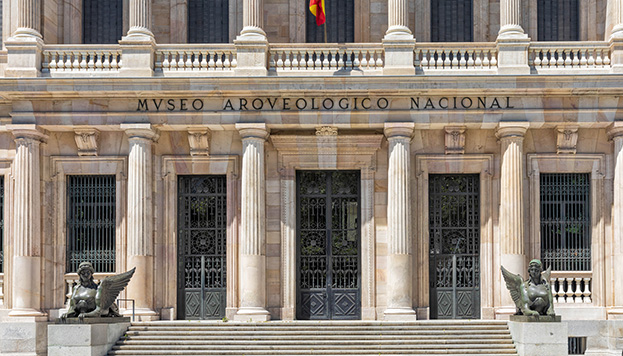
The ancient Egyptians considered them living statues. Traditionally depicted as lions with human heads, they protected temple entrances. In Greek mythology, however, they were demons of destruction and ill fortune. In Madrid, they can be seen at the main entrance of the National Archaeological Museum. Cast in bronze by Felipe de Moratilla between 1891 and 1895, they conform to traditional iconography, with the head and breast of a woman, the body of a lion and the wings –here they’re depicted semi-unfurled– of an eagle. In the Middle Ages, they were considered to be guardians of knowledge. Perhaps that’s why they were placed outside the building known as the National Library and Museums Palace, which was designed by Francisco Jareño de Alarcón (1866-1892).
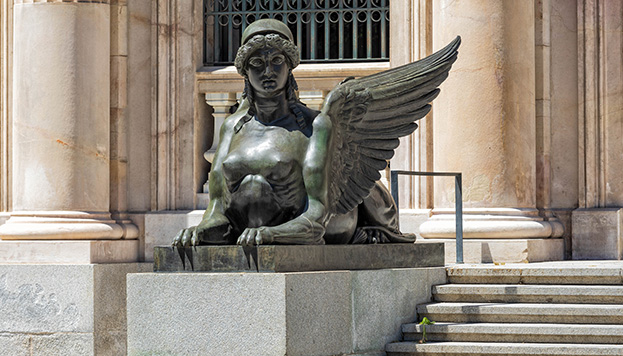
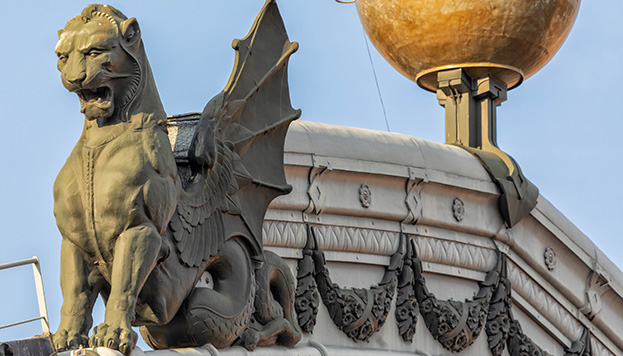
The roof of one of the city's most iconic buildings, Atocha Station, is home to two chimeras, hybrid monsters from Greek mythology that have the body of a goat, the tail of a snake or dragon and the head of a lion. They were designed by Alberto de Palacio Elissague in 1888.
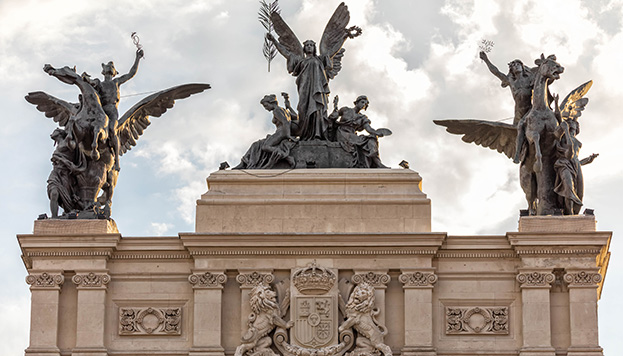
In 1905, just opposite Atocha Station, two winged horses created by Agustín Querol were placed on the building that is now the Ministry of Agriculture (Palacio de Fomento, or “Public Works Palace”). They are accompanied by Glory, a winged victory that symbolises progress.
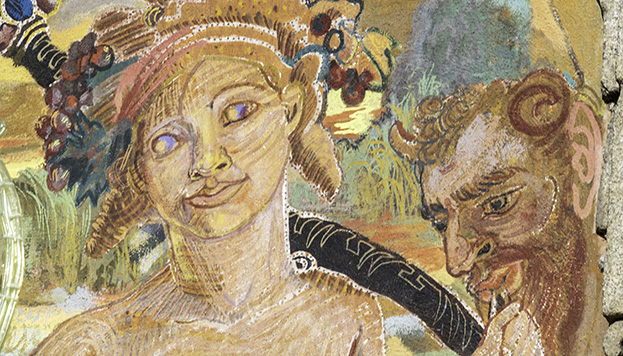
The goddess Cybele presides over the frescos on the façade of Casa de la Panadería, which was begun by Diego Sillero in 1590 and was completed and transformed by Gómez de Mora in 1617, to integrate it into the set of buildings in Plaza Mayor. Although there were also paintings between the building's balconies in times gone by, the ones we see today are the work of painter Carlos Franco. He completed the job in 1992, choosing to preserve the essential spirit of certain remnants (urns and caryatids) painted by his predecessor, Enrique Guijo, as well as the Spanish take on Classical mythology.
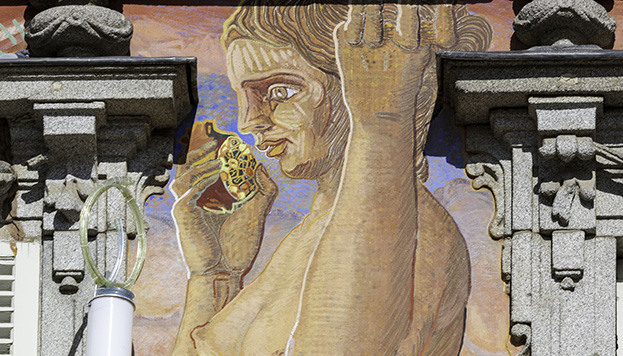
The goddess Cybele appears on the second floor (the third character starting from the left), where we also see Cupid (first on the left), the Roman god of love. If you look closer, you’ll find the Roman god of wine, Bacchus (first floor, first character on the left), Proserpina, the goddess of life, death and resurrection (on the tower to the right) and the Phoenix (on the tower to the left), which symbolises the square’s reconstruction after the fires that devastated some of the buildings that enclose it.
